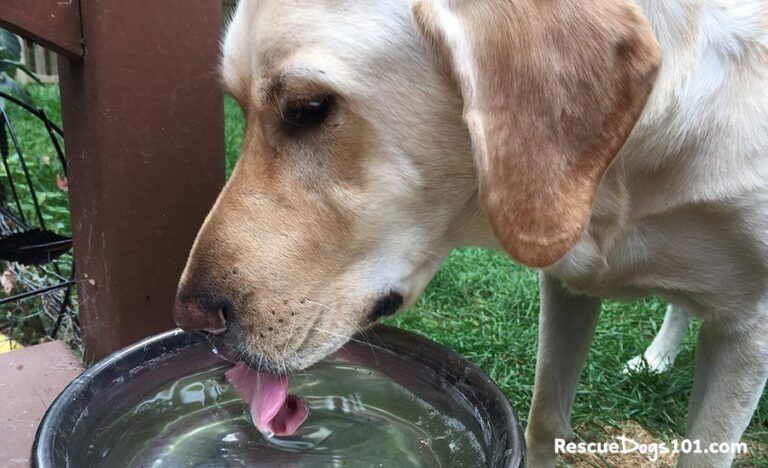Symptoms of Dog Allergies: How to Identify and Manage Them
Dogs bring unconditional love and loyalty into our homes, but just like people, they are not immune to allergies. Whether it’s seasonal pollen, certain foods, or environmental irritants, allergies can significantly impact your dog’s health and quality of life. In this comprehensive guide, we’ll walk you through the different types of dog allergy symptoms, explain what causes them, and provide insights into diagnosing, treating, and managing allergies effectively.
What Are Dog Allergies?
Dog allergies occur when a dog’s immune system reacts negatively to normally harmless substances known as allergens. These allergens can be inhaled, ingested, or come into contact with the skin. The immune system responds by releasing histamines, which cause inflammation and various allergic symptoms. Allergies can affect any breed and age of dog, though some are more genetically predisposed than others.
Common Symptoms of Allergies in Dogs
Allergy symptoms in dogs can vary based on the type of allergen and the sensitivity of the individual dog. Here are the primary categories:
1. Skin Issues (Canine Atopic Dermatitis)
- Itchy, red, or inflamed skin
- Excessive licking or chewing of paws, legs, and body
- Hot spots (moist, infected areas of skin)
- Scaly, dry, or flaky patches
- Hair loss in irritated areas
- Thickened or darkened skin from chronic itching
Dogs with skin allergies often scratch themselves raw, which can lead to secondary infections. The most commonly affected areas include the ears, belly, armpits, feet, and groin.
2. Ear Infections and Irritation
- Frequent head shaking or tilting
- Scratching around or inside the ears
- Foul odor from the ear canal
- Dark, waxy, or pus-like discharge
- Red, swollen ear flaps or inner ears
Ear infections often stem from food or environmental allergies. Yeast or bacterial overgrowth may develop as a secondary condition if untreated.
3. Respiratory Symptoms
- Frequent sneezing
- Coughing or wheezing
- Runny or stuffy nose
- Watery eyes or tear staining
- Difficulty breathing in severe cases
While less common than skin issues, respiratory symptoms often mimic those of hay fever in humans and are frequently triggered by airborne allergens like pollen, mold, or dust mites.
4. Gastrointestinal Issues
- Vomiting
- Diarrhea or loose stools
- Excessive gas or bloating
- Loss of appetite
- Weight loss over time
Food allergies are most likely to cause gastrointestinal symptoms, though they may also present with itchy skin or chronic ear infections.
Severe Allergic Reactions in Dogs
Hives (Urticaria)
Hives are raised, red bumps on the skin that appear suddenly after allergen exposure. They may or may not cause itching and typically subside within a few hours. Common triggers include insect bites, vaccines, and medications.
Facial or Throat Swelling (Angioedema)
This serious allergic reaction causes puffiness around the eyes, lips, muzzle, or throat and can obstruct breathing. If you notice facial swelling, contact your vet immediately.
Anaphylactic Shock
The most extreme form of allergic reaction, anaphylaxis can be fatal if not treated quickly. Symptoms include sudden collapse, difficulty breathing, pale gums, vomiting, and seizures. Immediate veterinary care is crucial.
Types of Dog Allergies
- Environmental Allergies: Caused by pollen, mold spores, grass, dust mites, or cleaning chemicals.
- Food Allergies: Triggered by proteins in beef, chicken, dairy, soy, wheat, or eggs.
- Flea Allergy Dermatitis: Caused by allergic reactions to flea saliva.
- Contact Allergies: Caused by direct skin contact with fabrics, plastic bowls, detergents, or certain shampoos.
Diagnosing Allergies in Dogs
Accurate diagnosis is key to managing allergies. A veterinarian may perform the following:
1. Physical Exam
The vet will look for visible signs of allergic reactions including rashes, swelling, or ear infections.
2. Elimination Diet
If food allergies are suspected, a novel protein or hydrolyzed diet is fed for 8–12 weeks. Gradual reintroduction of common allergens follows to identify the culprit.
3. Skin Testing
A common method for diagnosing environmental allergies, this test involves injecting small amounts of allergens into the skin to observe reactions.
4. Blood Tests
Serum allergy testing can help identify antibodies related to environmental or food allergens. However, results can sometimes be inconsistent.
Treatment and Allergy Management
Medications
- Antihistamines: Help relieve mild allergic reactions and itching (e.g., Benadryl, Zyrtec).
- Corticosteroids: Reduce inflammation but may have long-term side effects if used frequently.
- Immunosuppressants: For chronic or autoimmune-related reactions (e.g., Apoquel, Atopica).
- Antibiotics/Antifungals: Treat secondary infections from excessive scratching or open sores.
Immunotherapy (Allergy Shots)
This treatment gradually desensitizes the immune system to specific allergens. Customized injections or sublingual drops are administered over months or years for long-term relief.
Topical Relief
Medicated shampoos, sprays, and wipes can help relieve itching and reduce inflammation. Ingredients like oatmeal, chlorhexidine, or hydrocortisone are commonly used.
Dietary Changes
Switching to hypoallergenic or limited-ingredient diets is effective for food-related allergies. Consult your vet before changing your dog’s food.
Environmental Tips for Allergen Control
- Vacuum carpets, rugs, and pet bedding frequently
- Use air purifiers with HEPA filters
- Bathe your dog with hypoallergenic shampoo
- Wipe paws after walks to remove pollen or chemicals
- Switch to stainless steel or ceramic bowls (avoid plastic)
- Wash dog beds and toys weekly in hot water
FAQs About Dog and Human Pet Allergies
Q: Can dog allergies trigger asthma in people?
A: Yes, dog allergens can worsen asthma symptoms in sensitive individuals, causing wheezing, coughing, and breathing difficulty.
Q: What dog breeds are best for allergy sufferers?
A: Breeds with low shedding and dander like Poodles, Bichon Frises, Portuguese Water Dogs, and Schnauzers may be better tolerated.
Q: Are allergies more common in some breeds?
A: Yes, breeds like Boxers, West Highland Terriers, Bulldogs, and Golden Retrievers are more prone to allergies.
Q: Can I still keep a dog if I have allergies?
A: Yes, with proper management like HEPA filtration, pet-free zones, regular cleaning, and vet consultations, many allergy sufferers successfully live with dogs.
Q: Can essential oils help with dog allergies?
A: Use caution—some essential oils are toxic to dogs. Only use pet-safe formulations under veterinary guidance.
Q: How do I clean my home to reduce allergens?
A: Vacuum often using HEPA filters, wash bedding weekly, avoid wall-to-wall carpeting, and clean air vents regularly.
Final Thoughts
Understanding the symptoms of dog allergies—and knowing how to respond—can drastically improve your dog’s health and happiness. Whether your dog is dealing with itchy skin, digestive issues, or respiratory problems, early detection and a proactive approach are key. Work closely with your veterinarian to develop a tailored allergy management plan that ensures your dog lives a comfortable, symptom-free life.










